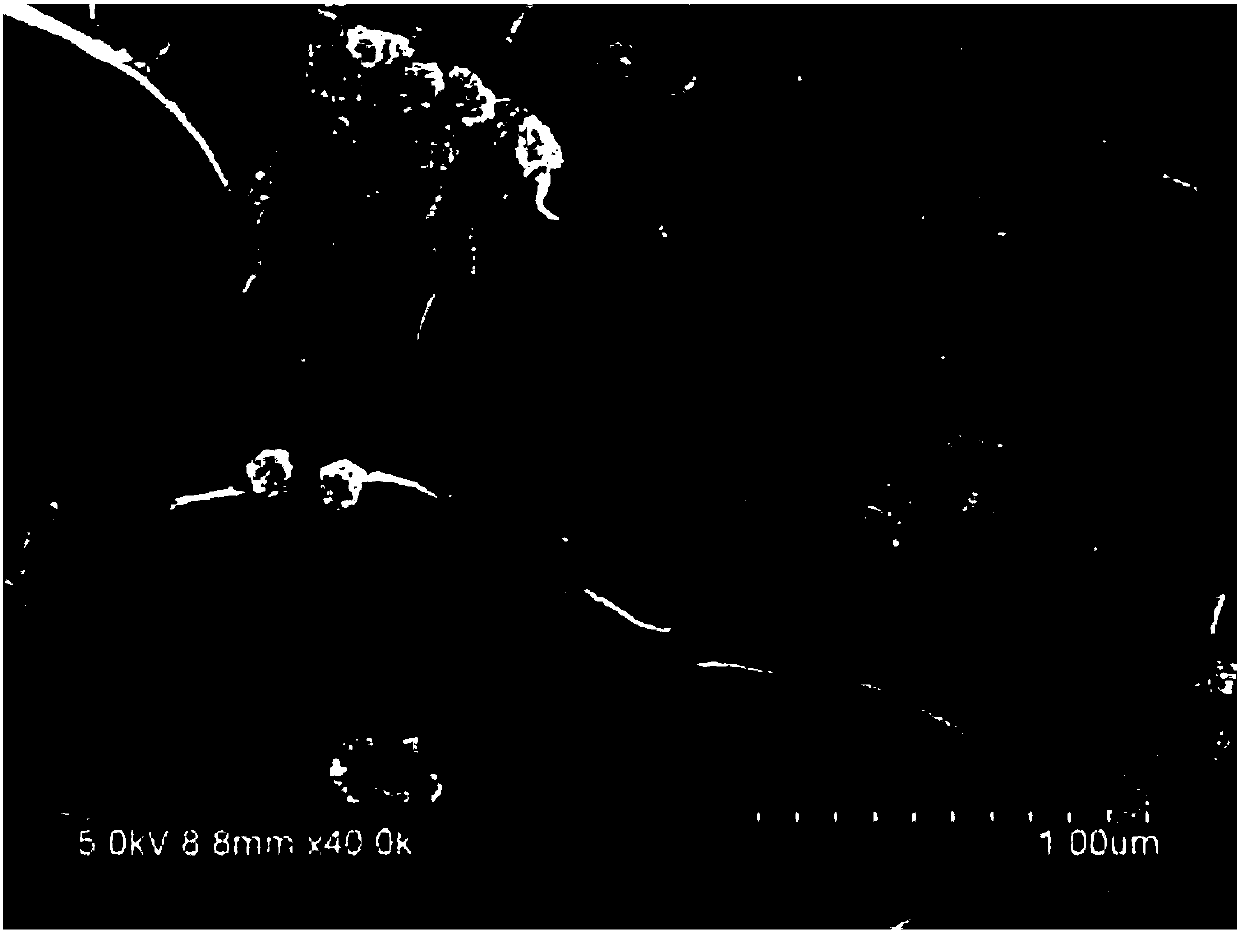Cyclodextrin nanocluster-modified graphene film material for removing bisphenol A pollutants in water and preparation method thereof
A graphene membrane and nanocluster technology, applied in water pollutants, water/sewage treatment, adsorbed water/sewage treatment, etc., can solve the problem of water treatment membranes with slow water purification speed and no bisphenol A pollutants found in water materials, cumbersome separation, etc., to achieve the effect of large water flux, simple and fast removal process, and broad application prospects
- Summary
- Abstract
- Description
- Claims
- Application Information
AI Technical Summary
Problems solved by technology
Method used
Image
Examples
Embodiment 1
[0044] Embodiment 1. Preparation of a graphene membrane material modified by cyclodextrin nanoclusters.
[0045] Using the Staudenmaier method (see Poh HL, F, Ambrosi A, et al.Graphenes prepared by Staudenmaier, Hofmann and Hummers methods with consequent thermalexfoliation exhibit very different electrochemical properties[J].Nanoscale, 2012, 4(11): 3515-3522.) prepare graphene oxide dispersion liquid, Adjust the dispersion to a solid content of 0.5 mg / mL. Take 0.5g of monoamino-modified Y-cyclodextrin and mix it with 200mL of graphene oxide dispersion, and ultrasonically treat it for 0.5h to make it evenly mixed. The above mixture was heated to 100° C. for 16 h under stirring. Then, 10 mL of hydrazine hydrate was added to the reaction system, and the reaction was stirred at 100° C. for 24 h. The obtained mixture is filtered and washed several times, and the obtained solid is dispersed in water again, and filtered through a microporous filter membrane to form a cyclodextrin...
Embodiment 2
[0047] Embodiment 2. Preparation of a graphene membrane material modified by cyclodextrin nanoclusters.
[0048] Using Brodie's method (see Botas C, P, Blanco P, et al.Graphene materials with different structures prepared from the same graphite by the Hummers and Brodie methods [J].Carbon, 2013, 65: 156-164.) prepare the graphene oxide dispersion, adjust the dispersion to The solid content is 5.0 mg / mL. Take 2.0 g of monoamino-modified a-cyclodextrin and mix it with 200 mL of graphene oxide dispersion, and ultrasonicate for 0.5 h to make it evenly mixed. The above mixture was heated to 80°C for 8h under stirring. Then, 20 mL of hydrazine hydrate was added to the reaction system, and the reaction was stirred at 100° C. for 24 h. The obtained mixture is filtered and washed several times, and the obtained solid is dispersed in water again, and filtered through a microporous filter membrane to form a cyclodextrin-modified graphene membrane material on the filter membrane.
[...
Embodiment 3
[0050] Embodiment 3. Preparation of a graphene membrane material modified by cyclodextrin nanoclusters.
[0051] With the improved Hummers method (see Hummers WS, Offeman RE. Preparation of graphitic oxide. J Am Chem Soc 1958; 80: 1339; and. Zhou H, Yao W, Li G, Wang J, Lu Y. 4-ethylenedioxythiophene) hydrogel with excellent mechanical performance and high conductivity. Carbon 2013; 59: 495-502.) prepared a graphene oxide dispersion, and adjusted the dispersion to a solid content of 2.5 mg / mL. Take 1.0 g of monoamino-modified β-cyclodextrin and mix it with 200 mL of graphene oxide dispersion, and ultrasonicate for 0.5 h to make it evenly mixed. The above mixture was heated to 100° C. for 24 h under stirring. Then, 20 mL of hydrazine hydrate was added to the reaction system, and the reaction was stirred at 100° C. for 24 h. The obtained mixture is filtered and washed several times, and the obtained solid is dispersed in water again, and filtered through a microporous filter m...
PUM
| Property | Measurement | Unit |
|---|---|---|
| solid content | aaaaa | aaaaa |
| solid content | aaaaa | aaaaa |
| solid content | aaaaa | aaaaa |
Abstract
Description
Claims
Application Information
 Login to View More
Login to View More - R&D
- Intellectual Property
- Life Sciences
- Materials
- Tech Scout
- Unparalleled Data Quality
- Higher Quality Content
- 60% Fewer Hallucinations
Browse by: Latest US Patents, China's latest patents, Technical Efficacy Thesaurus, Application Domain, Technology Topic, Popular Technical Reports.
© 2025 PatSnap. All rights reserved.Legal|Privacy policy|Modern Slavery Act Transparency Statement|Sitemap|About US| Contact US: help@patsnap.com


